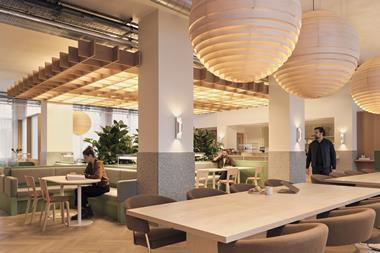The past week has seen further evidence of the structural change in the office market, from traditional leased space to flexible and co-working alternatives.

In their interim results, both British Land and Landsec indicated that branded flexible space will be a key component of their office portfolios moving forward, and Property Week reported on Spaces’ ambitious expansion plans.
Meanwhile, our recently published Your Space report revealed that two thirds of corporates see a dramatic shift towards flexibility in the next three years.
But what does this mean for owners of traditional office buildings and the companies occupying them?
In my property management career I have seen the utilisation of office space change and undoubtedly there is a greater demand for space that is enlivening, inspiring, enjoyable and collaborative, as well as functional.
But the good news for landlords and occupiers is that radical change is often not required to energise co-working. To encourage greater collaboration, you must think micro not macro. Subtle changes in how you configure space and use technology can have a big impact.
Moreover, there is an assumption that co-working is about interacting with new people from outside your organisation.
In many larger organisations, the greater benefit is in better interactions with colleagues, the people you already know and work with but are not necessarily collaborating with to the greatest effect. Relocating talent to new space, away from their cohort, can be counterproductive.
So, while operators such as WeWork have popularised the term ‘co-working’, we should not lose sight of the fact that the same behavioural change can be achieved in traditionally leased office space through better space planning and real focus on space as a service.
Michael Lewis, head of property asset management, Knight Frank






























No comments yet